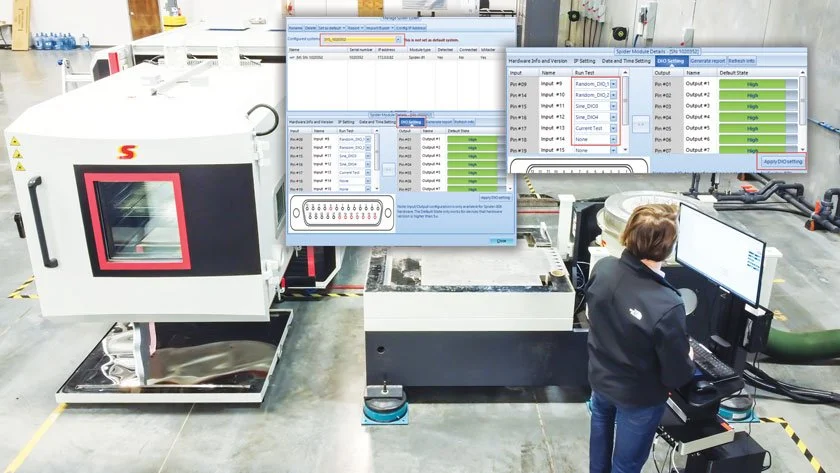Modal analysis is an essential technology behind solving today’s noise and vibration problems. Dr. Peter Avitabile, Professor Emeritus at University of Massachusetts Lowell, will discuss taking measurements – along with the pitfalls, difficulties, and common misconceptions related to modal testing. This seminar will focus on the practical aspects of impact and shaker measurements, the most common methods used to acquire data for experimental modal analysis.
Read MoreA Ground Vibration Test (GVT) involves carrying out modal analysis of an aircraft and its sub-assembly components to analyze and detect any changes in their structural properties. The modal parameters determined through this testing are used to validate analytical models. The modal characteristics are also used to predict the flutter of the aircraft in order to create a safe flight envelope before flight operation. Thus, GVT is a crucial process in the design and development cycle of aircrafts.
Read MoreCrystal Instruments recently updated the Vibration Utilities app (available for iOS and Android). This app supports features assisting in calculations related to the shock and vibration testing industry.
Read MoreVibration testing for the automotive industry, including the testing of batteries for electric vehicles, requires combined testing with temperature and humidity to ensure reliability and safety during operation. Contact Sentek Dynamics to configure a complete system or contact our testing service lab for more options.
Read MoreDeveloping a new product for commercial or defense application may require a wide range of tests to prove the strength and durability of a design. Shock testing is often required to ensure a product can endure the wear and tear it will experience when it is used in the real world.
Read MoreTo acquire FRFs of an engine, it is hung with bungee cords to imitate free-free boundary conditions. Two modal shakers were used to excite the V6 engine block. Shaker excitation provides better consistency and repeatability than a modal hammer. It also produces a cleaner data set because of a greater average. Multiple sensors are roved through the engine to obtain the vibration characteristics.
Read MoreThis paper concentrates on the MESA Sine on Random control per MIL STD 810H, method 514.8, annex D, 2.3 category 14. This category governs Sine on Random control for helicopters.
Read MoreIn the coming months, Sentek Dynamics will be installing and commissioning our first shock testing system offering a variety of wave types from half-sine to trapezoidal, peak acceleration of 1000 g’s, and capable of testing payloads of up to 200 kg. Alongside vibration, temperature, and humidity capabilities, shock testing will be the latest in the contract test services offered by the Sentek Dynamics Charlotte facility.
Read MoreIn today’s distributed work environment with employees working on-site and remotely, cloud capabilities are essential for an organization to operate effectively. Sentek Dynamics customers have a powerful time-saving tool available to them in the Engineering Data Management [EDM] Cloud by Crystal Instruments, Sentek Dynamics sister company and world-class data acquisition and vibration control innovator. The EDM Cloud provides a digital workplace for monitoring vibration tests from anywhere in the world.
Read MoreThis paper discusses the usage and unique features of Multiple-Exciter Single-Axis (MESA) control with Crystal Instruments vibration controller.
MESA is a type of multiple exciter setup with all exciters arranged along a single axis. The goal is to combine the excitation forces and dimensional capabilities from multiple exciters to test a long and/or large Unit Under Test. MIL-STD-810G Method 527 discusses the terminology involving single and multiple exciter testing configurations.
Read More










